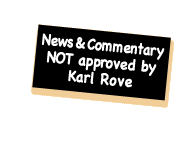The Federal Reserve was supposed to serve the nation, however as even Bloomberg observes today, ended up “steamrolling” Main Street. One reason why: directors such as this one.
Presenting former Morgan Stanley CEO, James Gorman, whose former employer got a $107 billion loan from the Federal Reserve to avoid implosion:
The Federal Reserve Bank of New York announced that James P. Gorman, chairman and chief executive officer of Morgan Stanley, has been elected a Class A director representing Group 1, which consists of member banks with capital and surplus of more than $1 billion. Mr. Gorman will serve a three-year term beginning January 1, 2016.
Mr. Gorman has been chief executive officer of Morgan Stanley since January 2010, and chairman since January 2012. Previously, he was co-president of the firm, which he joined in February 2006.
Before joining Morgan Stanley, Mr. Gorman held a succession of executive positions at Merrill Lynch. Prior to this he was a senior partner of McKinsey & Co. and began his career as an attorney in Melbourne, Australia.
Mr. Gorman serves as a member of the Federal Advisory Council to the Federal Reserve Board of Governors and as co-chairman of the Partnership for New York City. He is also a member of the Board of Overseers of the Columbia Business School, the Board of the Institute of International Finance, the Monetary Authority of Singapore International Advisory Panel, the Council on Foreign Relations, and the Economic Club of New York. He formerly co-chaired the Business Committee of the Metropolitan Museum of Art and was on the Board of the Securities Industry and Financial Markets Association in Washington, D.C., serving as Chairman in 2006.
Mr. Gorman holds a bachelor’s degree and law degree from the University of Melbourne, and an MBA from Columbia University
Read on.


